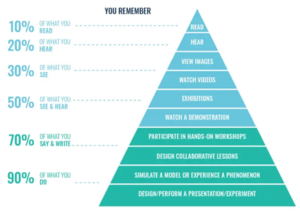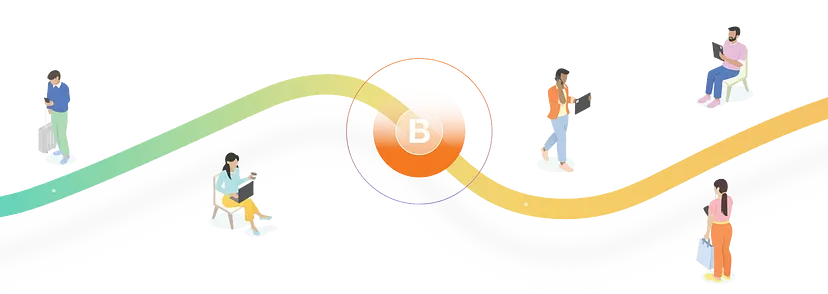The Indian Edtech sector, once hailed as the future of education, projections indicating an increase from $6 billion in 2023 to $10 billion by 2025 now finds itself at a critical crossroads. Giants like Byju’s and Unacademy, which once dominated the space and were recognised for revolutionizing learning through digital platforms with exponential growth and billion-dollar valuations, are now grappling with operational inefficiencies, mounting losses, and declining consumer trust. The COVID-19 pandemic acted as a catalyst, propelling Edtech platforms into every Indian household, but the post-pandemic reality paints a different picture. The question now looms – Is Edtech a dead horse?
The Rise and Fall of Indian Edtech Giants
The initial promise of Edtech was simple yet revolutionary, making quality education accessible to all, irrespective of geography. Byju’s captured the imagination of millions of Indian parents with slick marketing campaigns and promises of transforming learning outcomes.
However, the last two years have exposed the cracks in the business model. Byju’s has been struggling with cash flow issues, regulatory scrutiny, and growing dissatisfaction among parents. Unacademy too faced a similar fate, with mass layoffs and restructuring that reflected the underlying stress in the sector. Vedantu and Toppr, once perceived as emerging stars, have either downsized or pivoted their focus.
The problem? Sustainability and impact. Edtech platforms, in their race for hyper-growth, focused excessively on customer acquisition and aggressive sales, often at the cost of meaningful learning outcomes.
The Unseen Price: The Impact on Kids’ Mental and Physical Health
While the financial struggles of Edtech companies make headlines, a more insidious issue lurks beneath – the impact of prolonged screen time on children.
The introduction of digital devices in primary education, particularly during the formative years, is raising red flags among health experts and educators alike. Children aged 3 to 12, who should ideally be honing their motor skills and engaging in hands-on activities, are instead glued to tablets and laptops. Studies show that excessive screen time during childhood impairs cognitive development, reduces attention span, and affects emotional well-being.
Screen Time and Its Ripple Effects
- Vision and Eye Health: Prolonged exposure to screens contributes to digital eye strain, dry eyes, and an alarming rise in myopia among children. Studies suggest that screen time exceeding 2 hours daily can cause long-term damage to children’s eyesight.
- Reduced Social Skills and Outdoor Play: Children today are spending considerable hours on screens at school, which often leads to increased screen time at home. The more time children spend indoors, immersed in digital content, the less time they engage in face-to-face interactions and outdoor play. This lack of physical activity contributes to rising obesity rates, sleep disturbances and weaker social skills.
Children today are more likely to communicate through emojis and chat apps than through real-world conversations. This lack of face-to-face interactions diminishes opportunities for developing empathy, cooperation, and self-control, skills that are vital for navigating social environments. Moreover, the reliance on digital communication can lead to social isolation, as children substitute online interactions for real-world experiences. This isolation further worsens issues related to emotional intelligence and interpersonal relationships. - Pencil Grip and Motor Skills Decline: Surprisingly, a decline in basic pencil grip and handwriting skills is now being reported by educators. With children using touchscreens and keyboards from an early age, the fine motor skills required for gripping a pencil and writing legibly are underdeveloped. This not only affects handwriting but also has long-term implications for overall biomechanical development and their ability to perform everyday tasks as they grow older.
Early Exposure to Tech – A Double-Edged Sword?
While technology undoubtedly has its place in education, it is essential to recognize its potential benefits as students transition into higher education. Introducing it too early can be detrimental.
 Primary education, which lays the foundation for a child’s cognitive and emotional growth, requires hands-on experiences, creativity, and human interaction. Over-reliance on screens diminishes this rich learning environment, replacing it with a passive consumption model that leaves little room for imagination and critical thinking.
Primary education, which lays the foundation for a child’s cognitive and emotional growth, requires hands-on experiences, creativity, and human interaction. Over-reliance on screens diminishes this rich learning environment, replacing it with a passive consumption model that leaves little room for imagination and critical thinking.
As the saying goes, “With great power comes great responsibility.” Children in their formative years are not yet equipped to handle the responsibility that comes with navigating the digital world. Their brains are still developing, and they lack the awareness needed to make sound decisions about screen time or information consumption. This makes them highly susceptible to the addictive algorithms of digital platforms.
When Technology Becomes Relevant: The Age of Awareness
The narrative changes, however, as children grow older. As they approach adolescence and develop self-awareness and critical thinking skills, technology becomes a powerful tool for self-directed and higher learning.
Platforms like PhysicsWallah become invaluable for students preparing for competitive exams such as JEE, NEET, and UPSC. At this stage, children are more receptive to constructive feedback and are better equipped to manage screen time responsibly.
Teenagers can leverage online resources for research, engage in problem-solving through simulations, and gain access to world-class educators. The right balance between traditional learning and digital learning can enhance their ability to think critically and stay informed.
A Lesson from Sweden: Back to Basics?
India has a tendency to follow Western trends, often embracing technology without critically evaluating its long-term implications. However, a bold move by Sweden may offer a much-needed course correction. In 2023, the Swedish government made headlines by phasing out digital classrooms and reintroducing traditional teaching methods using books, pencils, and notebooks in primary education. Citing concerns about declining literacy and critical thinking skills, Sweden’s decision reflects a growing realization that foundational education should not be compromised in the name of technological advancement.
Check out this video
Striking the Right Balance
So, is Edtech a dead horse? Not entirely, but its role needs to be redefined. The blanket use of technology in primary education is proving counterproductive, affecting not only learning outcomes but also the physical, mental, and emotional well-being of children. As India navigates the education landscape, there’s an urgent need to strike a balance between traditional and digital learning models.
Edtech can and should play a critical role in higher education, competitive exam preparation, and skill enhancement. However, for younger children, the focus must return on holistic development, enabling creativity, motor skills, and social interactions. As the Swedish model suggests, sometimes, going back to basics is the boldest step forward.
From Auxano’s Stable: A Conscious Approach to Edtech Investments
At Auxano Capital, we have always believed in harnessing the power of technology to drive meaningful change, but with a conscious and balanced approach. Our journey into Edtech began in 2018, well before it became a mainstream investment trend. Even then, we were mindful of the potential impact of excessive screen time on young children and chose to invest in solutions that promote hands-on, experiential learning.
Our first Edtech investment was in Avishkaar, a company focused on introducing STEM learning to children as young as 5 years old, using a screen-free, experiential approach. Avishkaar later expanded to include courses in Robotics, IoT, and AI development for older children, ensuring that technology exposure increased progressively as children grew and became more self-aware.
In 2020, we invested in EduGorilla, which helps young aspirants prepare for competitive exams for state government jobs, catering to a more mature audience who can effectively leverage technology for academic success.
Our 2021 investments in Edukemy (enabling UPSC test prep) and Expertrons (focused on upskilling professionals) further reinforced our belief that technology-driven learning becomes significantly more impactful as learners develop the ability to manage screen time and use digital tools responsibly.
Throughout our investment journey, Auxano has remained cautious about introducing screen-based learning in primary education, recognizing the long-term implications on children’s mental, physical, and emotional well-being. Today, as global trends lean towards rebalancing digital and traditional learning methods, our investment thesis aligns perfectly with this evolving paradigm.
By maintaining a learner-centric approach and focusing on age-appropriate technology integration, Auxano has stayed true to its core philosophy – investing in transformative solutions that create long-term value while safeguarding the developmental needs of future generations.
Author
Karan Gupta


